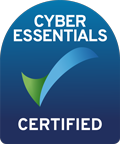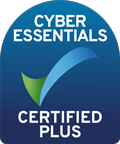What we’ve learnt about the technology dos and don’ts of remote teaching

What we’ve learnt about the technology dos and don’ts of remote teaching
The outbreak of the pandemic has put teachers and students all over the world to the test, probably one of the most challenging tests in school history. The school system had to rapidly come to terms with this new challenge of remote teaching, and still in many cases teachers are having to provide work for isolating classes. Teachers, caregivers and students alike have aced that test quite well and have all our respect for tackling remote education with such gusto! One of the key parts that have enabled a successful remote teaching and learning environment has been digital solutions. As much as we are sick of video calls – it would’ve been a lot harder without virtual classrooms.
Advanced technology has been a real game-changer in today’s daily operations of schools. But there are a few things to keep in mind when it comes to technology and remote teaching to keep your student’s data safe, enable them to have a successful learning experience, and make your own life much easier. Here’s what we’ve learnt over the past year that you should and shouldn’t do when teaching your students the arts of maths, biology, science, etc remotely.
Do’s
-
Keep your data safe
Data breaches happen all the time. Institutions are constantly exposed to external threats like ransomware, malware, or phishing emails that steal your data and can put your organisation at significant risk. Especially weak passwords or unprotected access to your files as this is just what hackers are waiting for. All too many people still have their dog’s name as a password and don’t realise this leaves you vulnerable to cyber-attacks. Using complex passwords and implementing multi-factor authentication helps to protect your data.
-
Backup your work online
Losing important documents or projects that you invested several hours of work in can turn into an absolute nightmare. Having a backup and recovery strategy in place means your work and data are protected should something go wrong. Keeping several copies of your data in different formats (offsite and in the Cloud) can provide peace of mind. If one gets lost, you still have some additional copies stored elsewhere.
-
Consider working with the Hybrid Cloud
Embracing a Hybrid Cloud infrastructure comes with several benefits. The Hybrid Cloud stores some of your data in the Public Cloud and other, usually sensitive data, on local private networks. It doesn’t just simplify collaboration processes, it also protects data that you wouldn’t want to end up in the wrong hands.
Don’ts
-
Don’t assume students know how to use the technology
Sometimes teachers forget that students might not be as ‘techy’ as they are. Moving from a smartphone to a computer are like wearing two different pairs of shoes. Not all of them might be up to speed with their laptop or applications they are asked to use for online learning. Just telling your students where to submit their work won’t do, you’ll have to explain the entire process to them to ensure it’s done securely. This might require some patience but will save you headaches further down the line.
-
Avoid using too many online tools
Simplicity is key – so make the learning process for your students as simple as possible. Instead of using several tools, pick one main tool to work with. This saves your students the pain of remembering a dozen passwords and learning the specifics of how every single tool works. Plus, your students’ parents will thank you too.
-
Don’t pay for unnecessary costs for more storage space
Various learning and teaching materials, video tutorials, and other important documents take up large amounts of data storage. With your data stored on-premises, you have to pay for all the data you keep adding, which can quickly burn a hole in your pocket. Moving your data to the Cloud can help you save money, as you only pay for what you need. You can scale up or down as you see fit without having to cover the extra costs.
Digitalisation has made remote teaching so much easier. However, if it isn’t used properly, it can cause a few roadblocks on the way to efficient online learning. Primary ICT can help you tackle all the challenges you might face with your remote teaching strategy and lead the way to successful online teaching.
To find out more, speak to one of our experts today.
Customer Feedback
 one arrived but none in stock2025-07-10 14:38:38
one arrived but none in stock2025-07-10 14:38:38 amazing service as usual2025-07-10 10:13:04
amazing service as usual2025-07-10 10:13:04 Jon was excellent, really responsive, went above and beyond to make sure that my iPad was set up correctly2025-07-09 14:40:22
Jon was excellent, really responsive, went above and beyond to make sure that my iPad was set up correctly2025-07-09 14:40:22 Very speedy!2025-07-09 13:29:51
Very speedy!2025-07-09 13:29:51 Dealt with efficiently2025-07-08 13:13:33
Dealt with efficiently2025-07-08 13:13:33 A good job as normal.2025-07-08 10:17:45
A good job as normal.2025-07-08 10:17:45 Quick prompt service as always x2025-07-07 10:53:45
Quick prompt service as always x2025-07-07 10:53:45 Issue resolved promptly.2025-07-04 12:55:05
Issue resolved promptly.2025-07-04 12:55:05 Quickly resolved. Good communication.2025-07-04 08:09:21
Quickly resolved. Good communication.2025-07-04 08:09:21 Super quick response!2025-07-04 07:29:27
Super quick response!2025-07-04 07:29:27 Exactly what I asked for and within an excellent time frame - thank you for doing this so quickly.2025-07-04 07:00:59
Exactly what I asked for and within an excellent time frame - thank you for doing this so quickly.2025-07-04 07:00:59 All communicated very well2025-07-03 12:14:05
All communicated very well2025-07-03 12:14:05 Thank you for your fast support2025-07-03 09:40:41
Thank you for your fast support2025-07-03 09:40:41 Quick reply, easily resolved!2025-07-03 08:52:36
Quick reply, easily resolved!2025-07-03 08:52:36 Very fast service and problem resolved2025-07-03 07:30:07
Very fast service and problem resolved2025-07-03 07:30:07 Thank you Heather for your help as always, much appreciated.2025-07-02 13:34:49
Thank you Heather for your help as always, much appreciated.2025-07-02 13:34:49 Great service. Very quickly resolved.2025-07-02 11:23:39
Great service. Very quickly resolved.2025-07-02 11:23:39 Dealt with promptly and kept me updated. Thankyou2025-07-01 13:06:17
Dealt with promptly and kept me updated. Thankyou2025-07-01 13:06:17 Thank you John,
That's really prompt!
Jo2025-07-01 08:31:51
Thank you John,
That's really prompt!
Jo2025-07-01 08:31:51 Thanks to Heather for all the support with mu housekeeping of users.2025-06-30 07:13:18
Thanks to Heather for all the support with mu housekeeping of users.2025-06-30 07:13:18

 Request Support
Request Support




